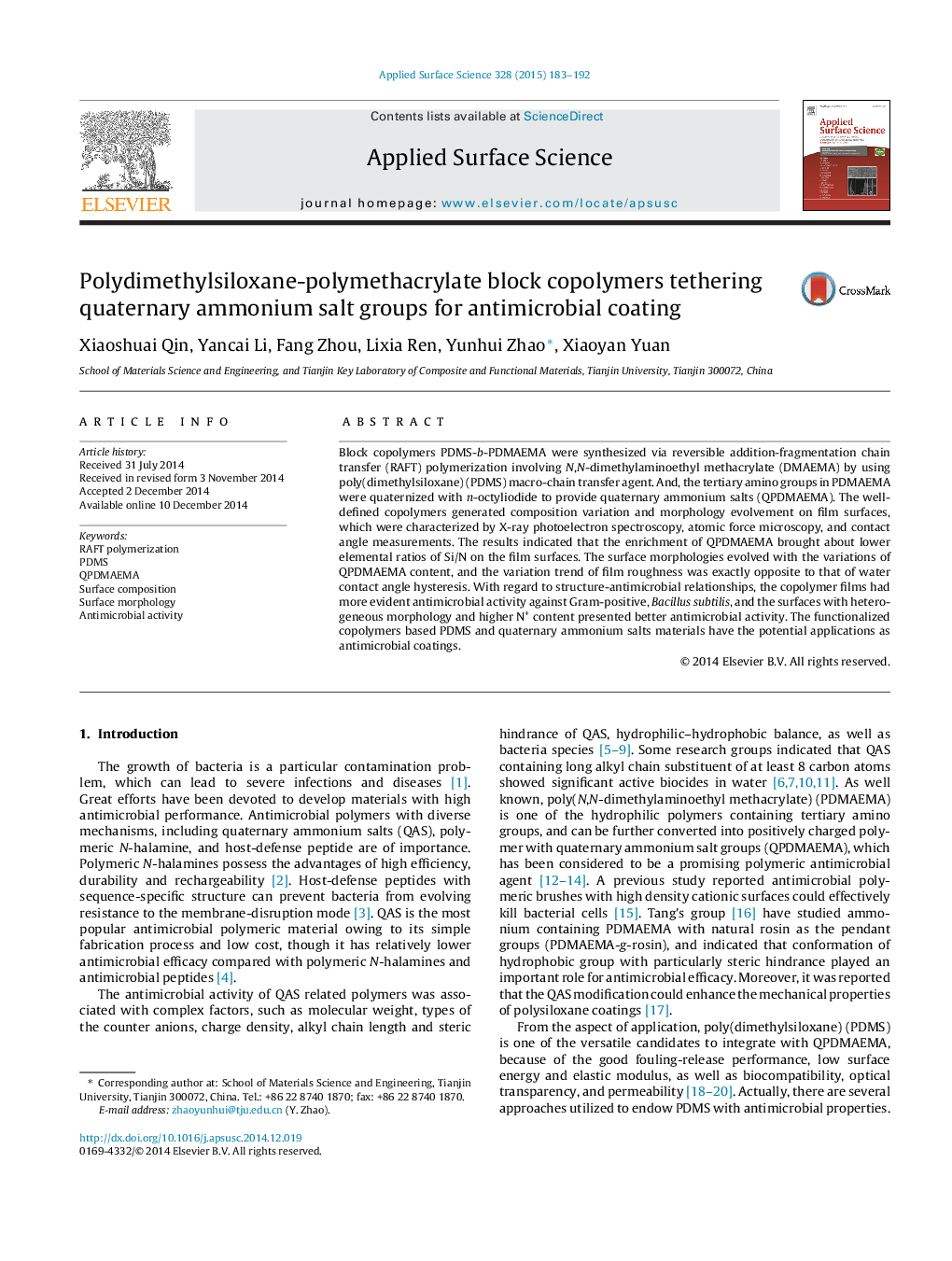| Article ID | Journal | Published Year | Pages | File Type |
|---|---|---|---|---|
| 5348819 | Applied Surface Science | 2015 | 10 Pages |
Abstract
Block copolymers PDMS-b-PDMAEMA were synthesized via reversible addition-fragmentation chain transfer (RAFT) polymerization involving N,N-dimethylaminoethyl methacrylate (DMAEMA) by using poly(dimethylsiloxane) (PDMS) macro-chain transfer agent. And, the tertiary amino groups in PDMAEMA were quaternized with n-octyliodide to provide quaternary ammonium salts (QPDMAEMA). The well-defined copolymers generated composition variation and morphology evolvement on film surfaces, which were characterized by X-ray photoelectron spectroscopy, atomic force microscopy, and contact angle measurements. The results indicated that the enrichment of QPDMAEMA brought about lower elemental ratios of Si/N on the film surfaces. The surface morphologies evolved with the variations of QPDMAEMA content, and the variation trend of film roughness was exactly opposite to that of water contact angle hysteresis. With regard to structure-antimicrobial relationships, the copolymer films had more evident antimicrobial activity against Gram-positive, Bacillus subtilis, and the surfaces with heterogeneous morphology and higher N+ content presented better antimicrobial activity. The functionalized copolymers based PDMS and quaternary ammonium salts materials have the potential applications as antimicrobial coatings.
Related Topics
Physical Sciences and Engineering
Chemistry
Physical and Theoretical Chemistry
Authors
Xiaoshuai Qin, Yancai Li, Fang Zhou, Lixia Ren, Yunhui Zhao, Xiaoyan Yuan,
